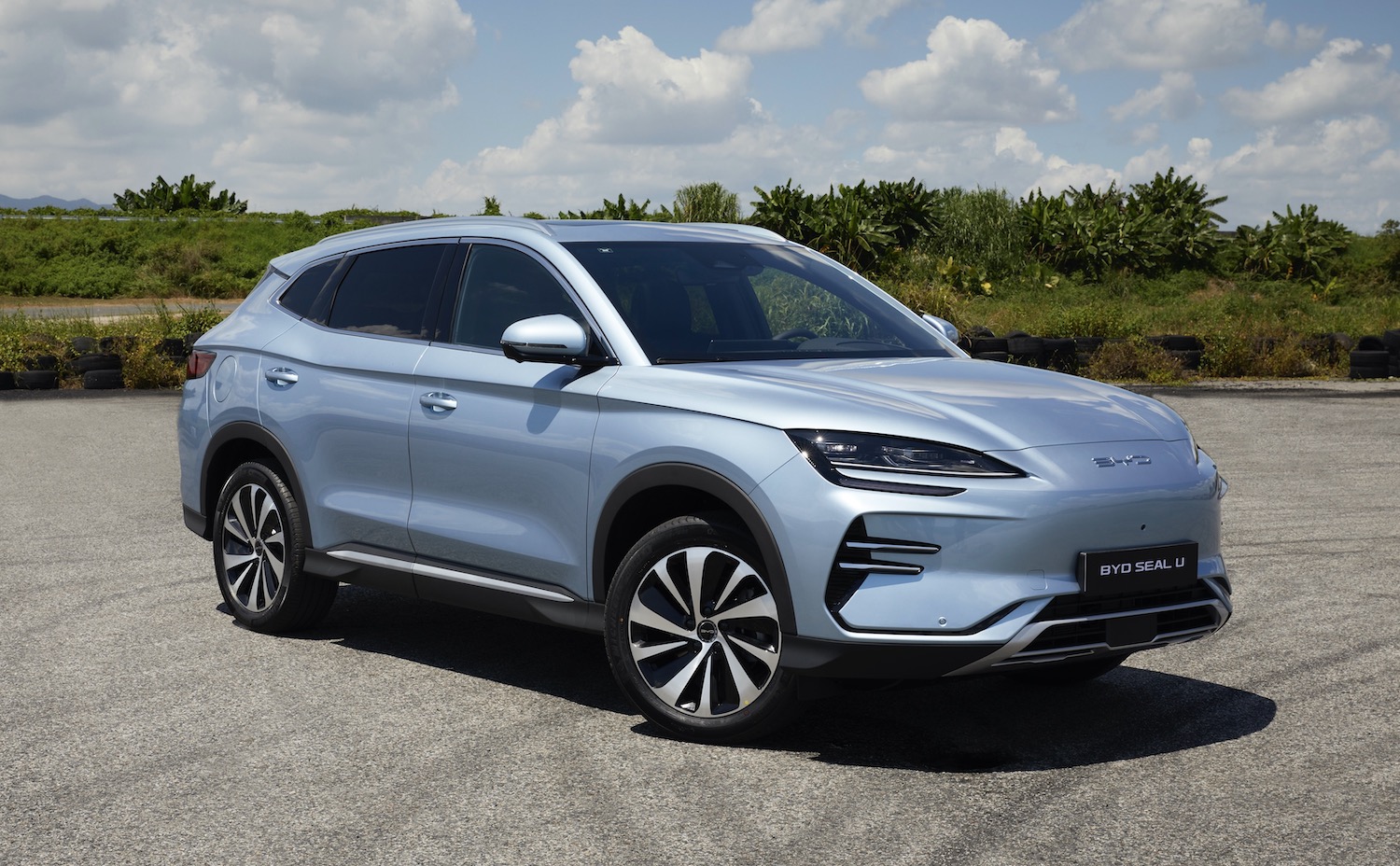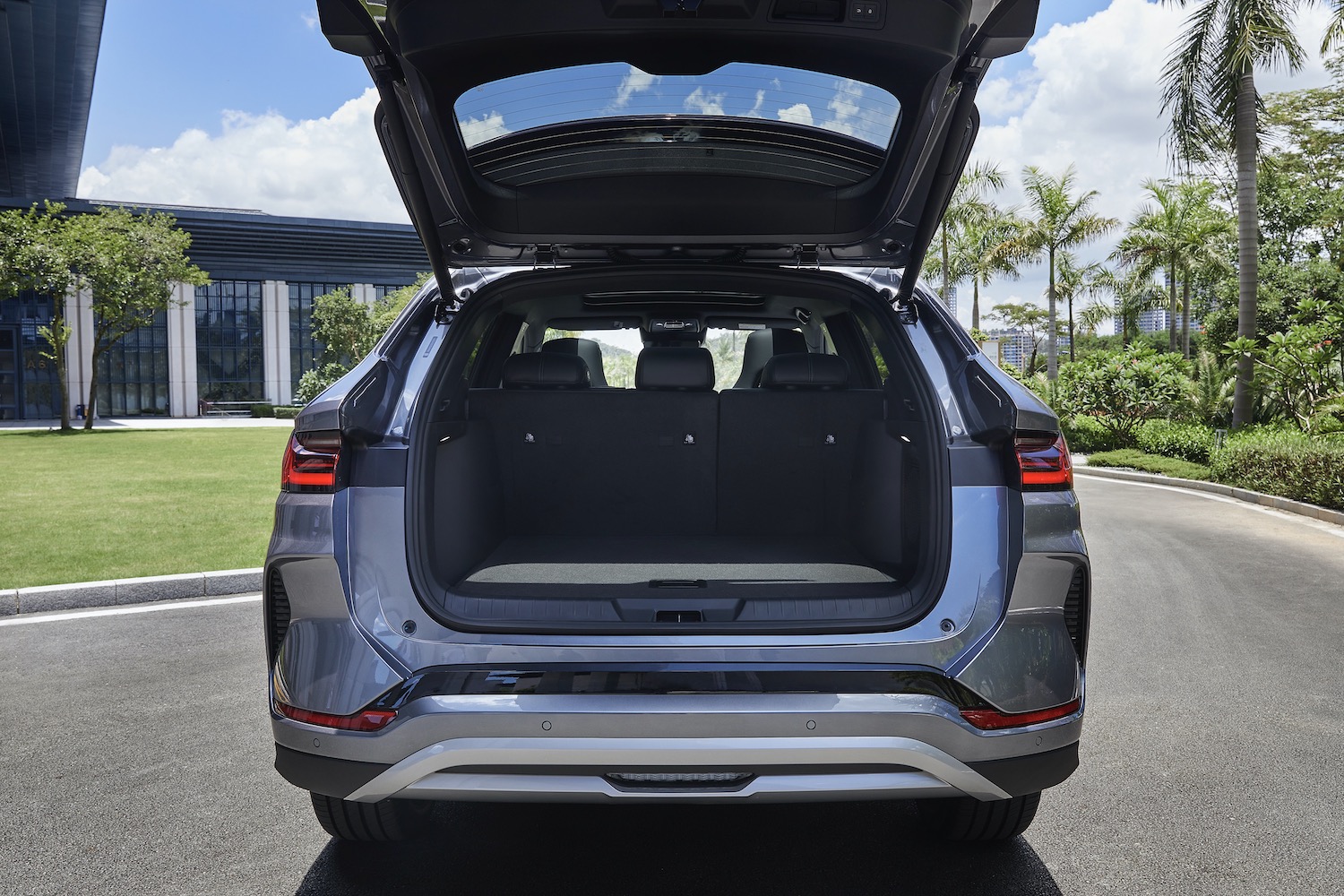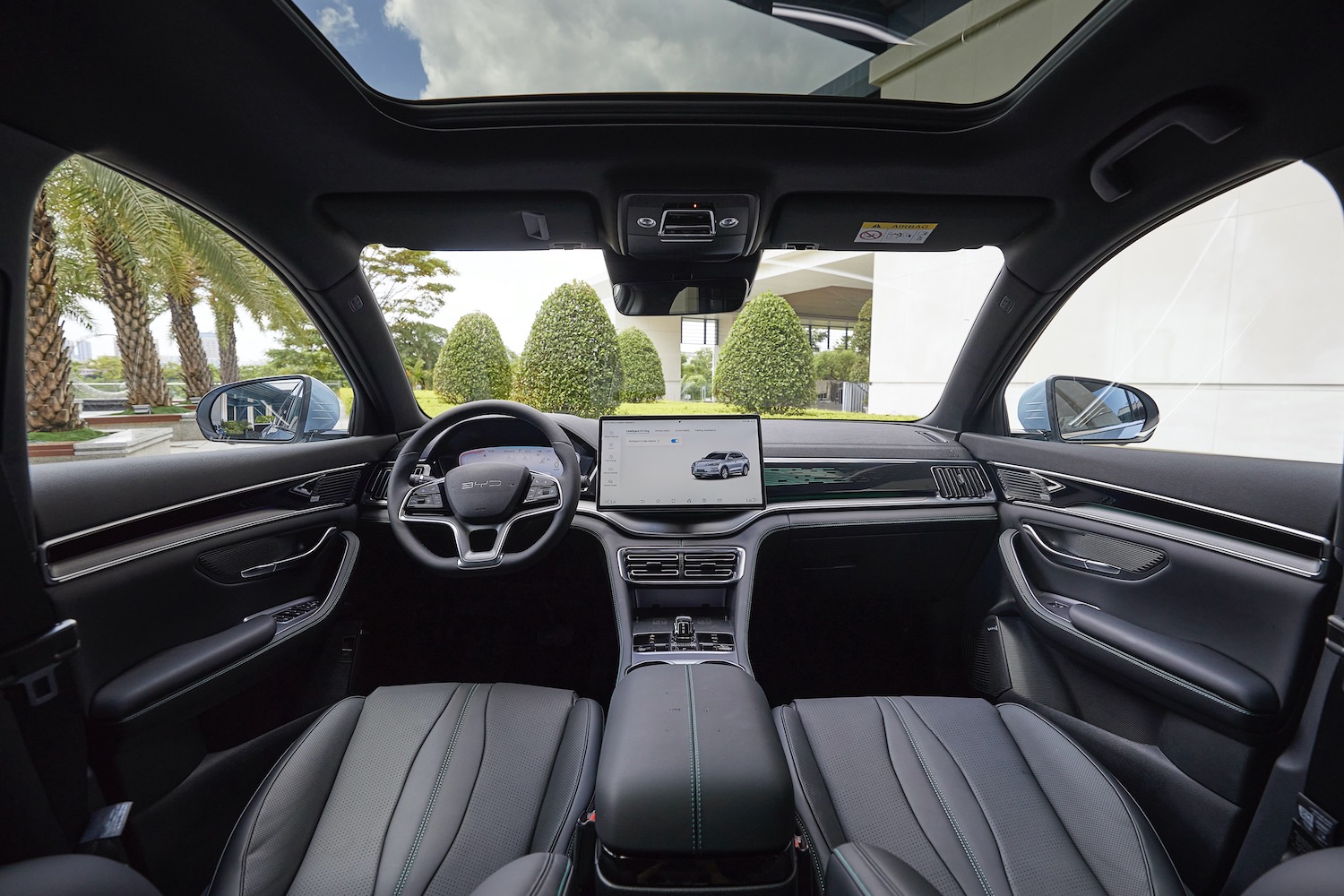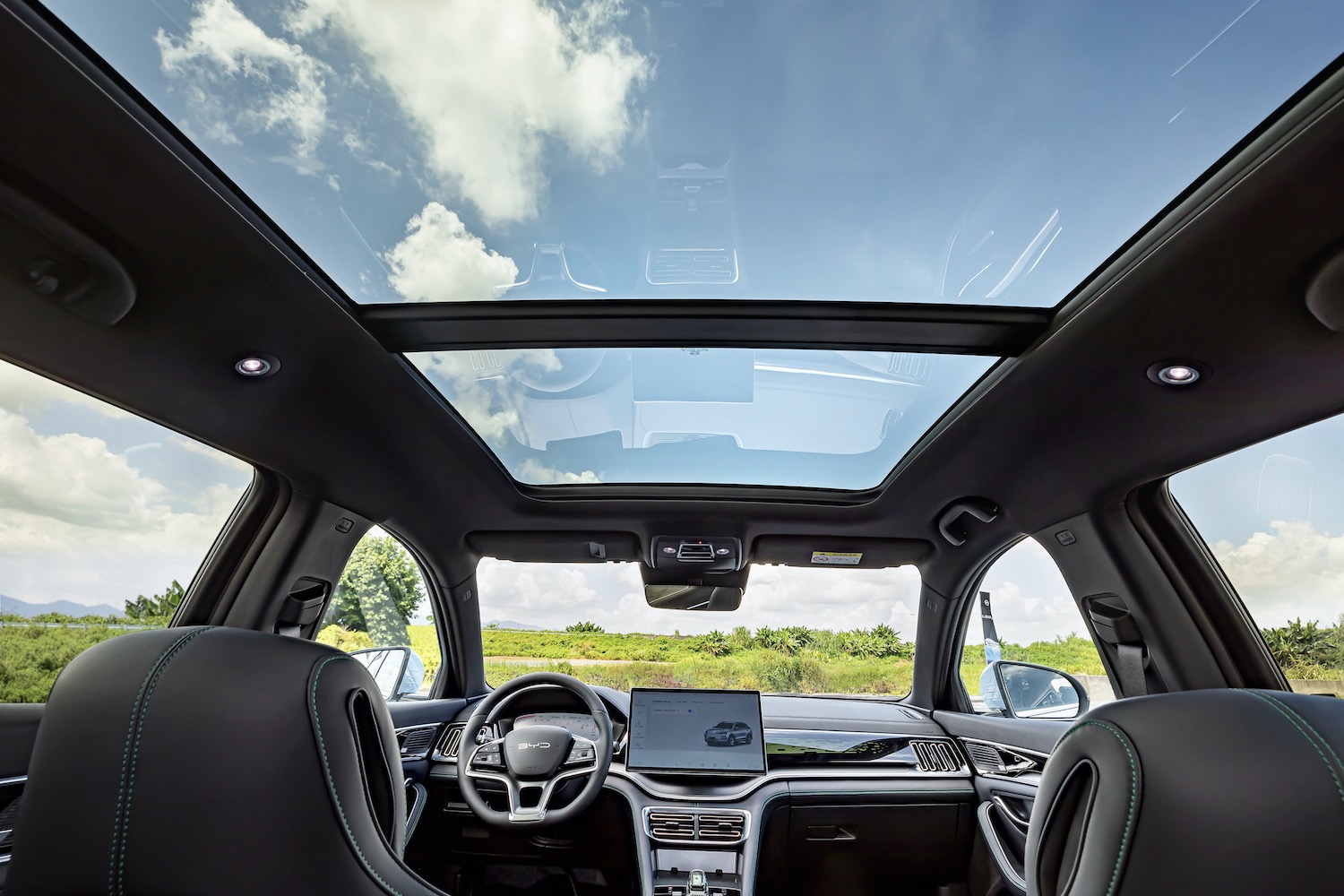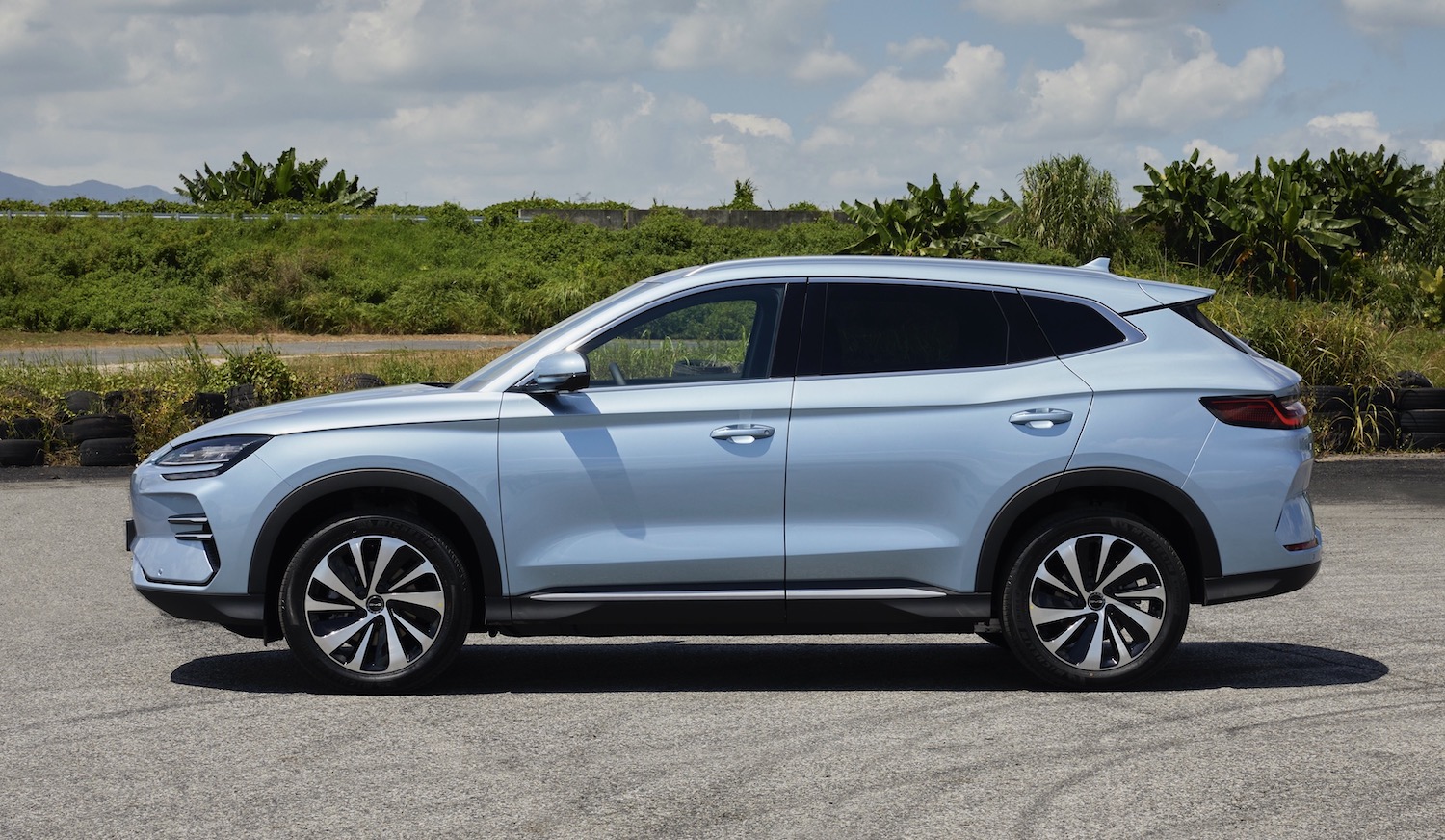That means the force behind the roll out is strong. The Atto will be very quickly followed by another four all-electric models. First will be the £25,000 Dolphin which is due in showrooms imminently.
And the next two will be added this autumn: the Seal saloon, ready to go up against the Tesla Model 3, and the Seal U, which competes against models such as the VW ID.4, Skoda Enyaq, Ford Explorer and Nissan Ariya with estimated prices starting at around £40,000.
BYD Seal U space and practicality
The Seal U is 4.79 meters in length with a wheelbase of 2.75 metres, which is on the large side, meaning it offers plenty of space in the cabin.
The luggage compartment has a double floor and can hold a total of 570 litres with the seats up and 1,449 litres with them folded. There’s no frunk though - it fell victim to the combustion engine offered as an alternative in China for the plug-in version.
BYD, on the other hand, does not make any compromises when it comes to ambience: Just like the Seal, the Seal U looks decidedly classy, feels fine and elegant everywhere and affords - for example around the selector lever for the transmission - the same trim made of imitation lead crystal as BMW and Genesis.
In addition, there is extensive ambient lighting in doors as well as in the partially transparent cockpit and, as is so often the case with the Chinese, a rather playful infotainment system with a huge rotating tablet in front of the centre console including a selfie camera and karaoke microphone.
BYD Seal U driving and performance
In contrast to the Seal saloon, the U is designed to be sporty and is more about relaxation. Hence it has strong steering assistance, takes the driver out of the action early on and has decidedly defensive assistance systems with plenty of flashing and bleeping if you do something it doesn’t like.
The drive in the Seal U is therefore rather unexciting. First of all, there is only one motor powering the front wheels, which has a totally sufficient 216bhp. This sprints from a standstill to 62mph in just over nine seconds. But BYD has already indicated that it is also thinking about introducing a model with a second motor, because all-wheel drive for an SUV in this class is seen as desirable, if not essential.
But for now, the Seal U is yet another electric SUV in which driving a car is more about getting to your destination rather than enjoying the journey.
BYD Seal U battery, range and charging
The pride and joy of the BYD’s developers is the battery. After all, BYD is one oft he biggest makers of power packs in the world and started out making the cells which powered our Nokias in the 1990s.
Like all electric cars from BYD, the Seal U comes with the ‚blade‘ battery that is supposed to make BYD the champion of all EVs. The cells used are not round, but thin and long like the blades of a knife and extend over almost the entire width of the vehicle in the underbody.
This not only increases safety and reduces costs, but also allows a very compact and, above all, flat battery, which also becomes an integral part of the car’s structure, thus increasing the stiffness and, in turn, reducing weight.
The batteries in the Seal U are offered in two sizes - with 72 or 87 kWh, offering either 261 or 311 miles. A heat pump is standard, which should ensure the range doesn’t shrink too much in cold weather. But that efficiency is only average for the class at around 3.5 miles for every kWh of electricity.
When it comes to charging the BYD blade looks a little blunt too. A so-so 11 kW is the maximum at AC points and only 115 to 140 kW on the DC fast charger, depending on the version. That’s only very average these days.
BYD Seal U Verdict
It might seem to have come out of nowhere but BYD is set to grow fast in the UK and Europe, with a lot of impressive models which are keenly priced. It’s rumoured that the company expects to take 10% of the electric car market here within a few years.
The Seal U is key to making this happen, and we can see how it’s an attractive package which will appeal to many oft he drivers who are currently driving an internal combustion car like a Nissan Qashqai.
However the pricing will be key, as the Seal U is decidedly average in many key areas. The efficiency, charging speeds and driving experience in particular are all run-of-the-mill.
If the costs compared to other cars in its class are a low as the Dolphin is compared to its rivals, buyers could be prepared to overlook its averageness.













